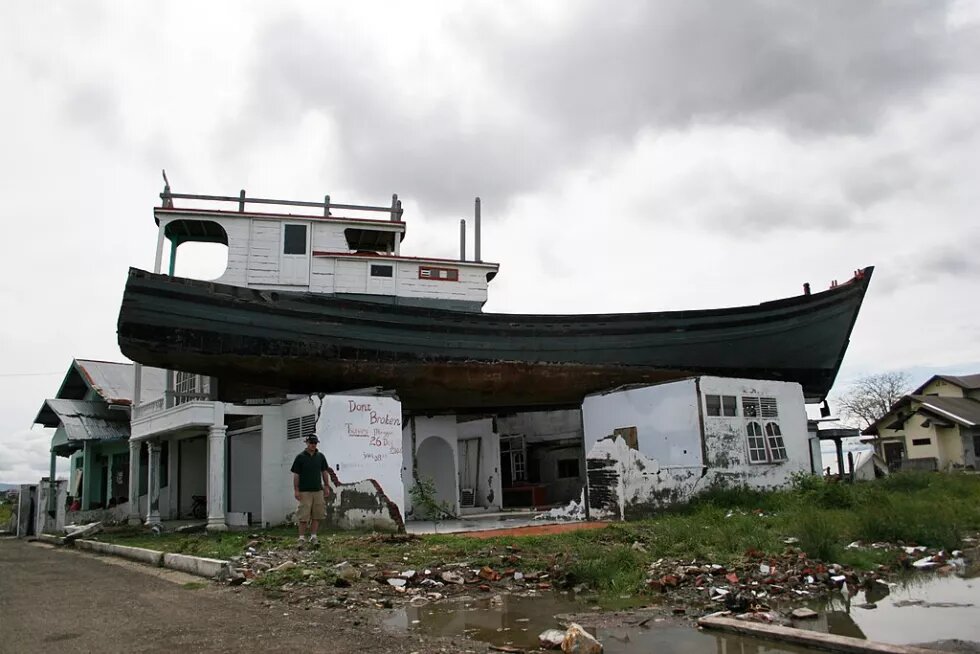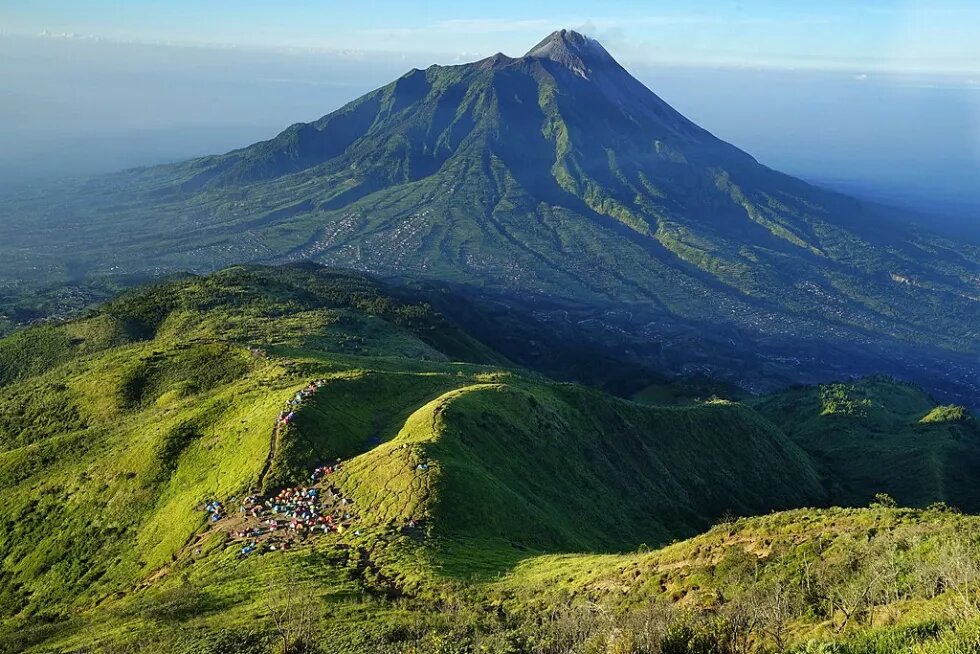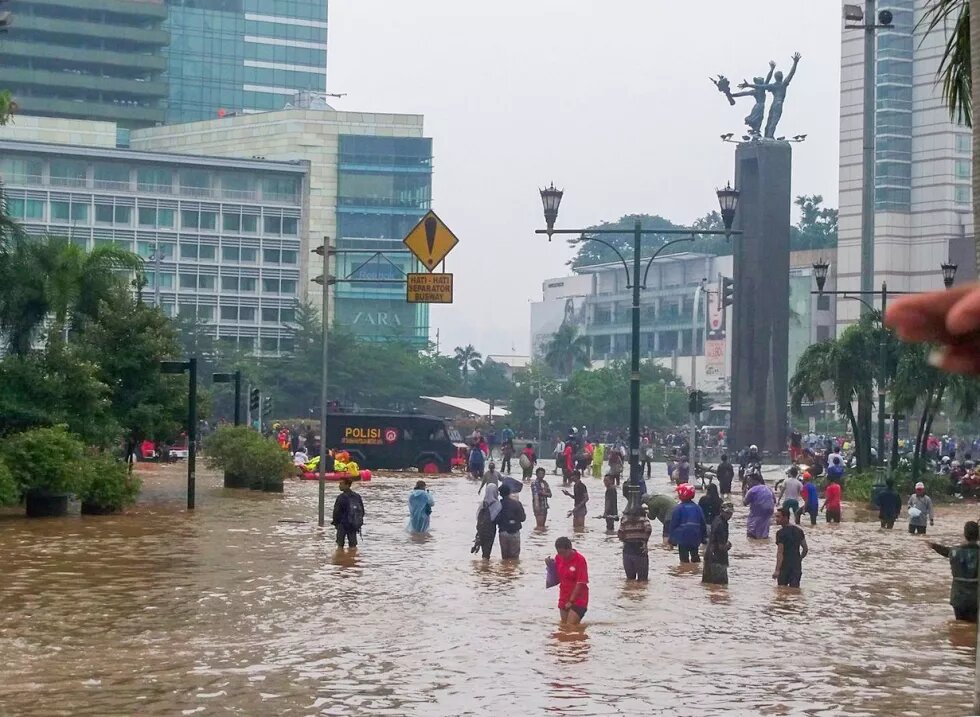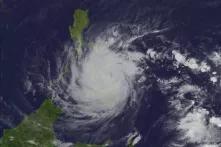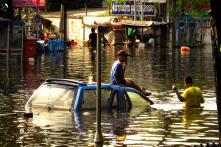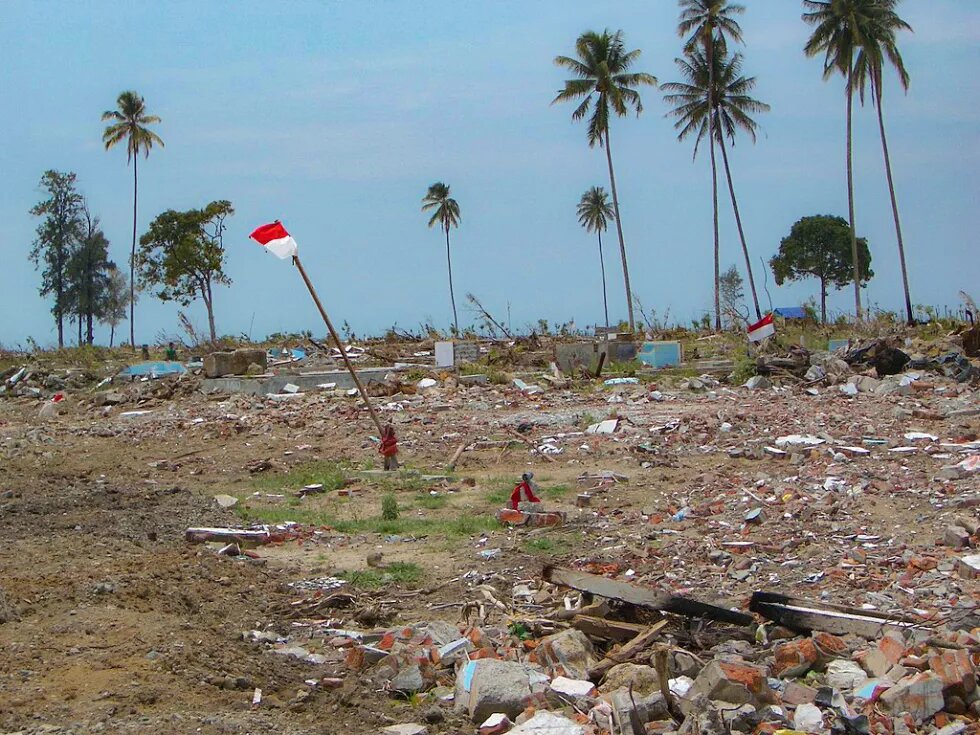
Indonesia is one of the world's most disaster-prone regions and disaster risk management has been practiced in locally specific ways for hundreds of years. The early warning system (EWS) more recently outlined in regulations has yet to be fully well-implemented, and comes with major complexities from budget allocations through to government coordination. How can the country best navigate its way through both systems of disaster management?
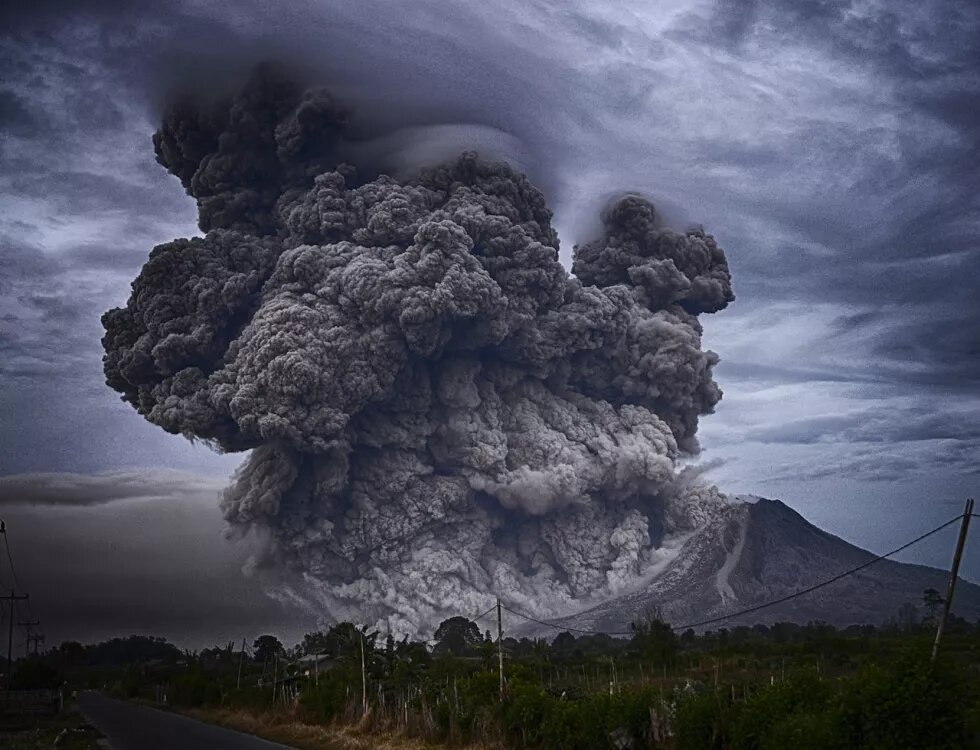
Natural disasters are the reality for Indonesian people. The country has experienced an average of more than 250 significant natural disasters annually over the last 3 decades. Apart from being an archipelago nation, its geographical placement in the Ring of Fire around the Pacific Ocean means disasters are prevalent.
For decades, spatial awareness has been internalized culturally but not structurally. From ancient times, disaster-prone consciousness has been taught as collective memory in the book Babad Tanah Jawi (‘History of the Land of Java’), while during the Dutch colonialization era, disaster information was disseminated in articles in the newspaper De Locomotief. In contrast with more recent times, the structural awareness of early warning systems only arose with the momentum of the 2004 tsunami in Aceh, initiating the establishment of disaster management regulation in Southeast Asian countries and the international disaster blueprint of the Hyogo Framework for Action (HFA). At the international level, the HFA stresses disaster risk reduction (DRR) at the regional, national, and subnational levels to facilitate more systematic planning, implementation, and assessment of DRR efforts. Between 2005–2015, the HFA was a global 10-year action plan. Priority 1 of the HFA is that DRR is a national and local government priority, and this has emerged as the major global tool for driving DRR implementation at all levels of society.
Complexity and uncertainty of early warning systems
One of the priorities of Goal 13 of the United Nations Sustainable Development Goals (SDGs) is to increase resilience and adaptation ability to climate-related hazards, which essentially includes minimizing catastrophe risks. Natural disasters are increasingly growing, lethal, and costly, prompting widespread concerns. Consequently, disaster risk reduction (DRR) has been designed as a systematic mechanism to minimize disaster risks by examining and dealing with disaster-causing elements, such as reducing susceptibility and enhancing disaster readiness, championed by the HFA. Most disaster-prone countries currently have DRR platforms as standard.
According to the United Nations Environment Programme (UNEP) in 2015, the early warning system (EWS) is defined as providing timely and effective information through the identified institution that enables individuals exposed to hazards or mitigate risk and prepare for effective responses. As a result, EWS can prevent loss of life during the most significant disasters. In Indonesia, the structural EWS flourished after the 2004 tsunami in Aceh, regulated under assorted laws and policies related to responsibilities of assorted government agencies at all levels, including information dissemination.[1]
The EWS is part of disaster preparedness in disaster management interconnected with complexity and uncertainty. Complexity describes the characteristics of a complex system that includes interactions between people and all physical items in the environment, and it can emerge as a result of hazard multiplicity interlinking. The complexity of the EWS mechanism has challenged the accuracy of sufficient community time for mitigation efforts, which is called 'golden time'. For instance, the missed calculation of golden time happened in the tsunami that affected Palu in 2018. The average hit time is 20 minutes after the earthquake, and the EWS warning system was disseminated five minutes before the tsunami reached residents in the riparian coastal region. As a result, more than 5,000 fatalities were inevitable due to this tragic occurrence. Similarly, the Semeru volcano eruption in East Java in December 2021 resulted in the death of at least 43 people due to the lack of early warning.
Ideally, Indonesia must be provided with one set of EWS equipment every 60 kilometers, as noted by the Minister of Research and Technology Mr Kusmayanto Kadiman. In parallel, the concept of unified budgeting makes the budget of the disaster management allocation process seem bureaucratically complex. Mr Doni Monardo, recent Head of the National Disaster Management Agency, mentioned that the percentage of disaster budget allocation has changed dynamically – there has been an annual decrease of around 22%. From 2015, the budget was allocated IDR 1,661 trillion until 2021 was allocated IDR 481 billion rupiahs, and disaster relief endowment remains at the same amount of IDR 5 trillion each year. The sources of the disaster management budget come from central and local government, but the budget is still limited to less than 1%, whereas it is supposed to be allocated at least 2% from national and local budget allocation as well as disaster relief endowment.
In the case of disaster management of the Sidoarjo mud flow, the budget allocation comes from seven government institutions causing an overlap. If the budget provided by the local government is insufficient, the local government is required to propose an 'on-call' budget to the National Legislative Council, which takes a longer time to approve. The command-and-control strategies are therefore still top-to-down with complex processes in a vertical direction. Consequently, the number of early warning equipment is still inadequately deployed throughout Indonesia – most remain centered in the Java Islands, whereas disasters have occurred throughout Indonesia, for instance, in Sumatra and Sulawesi Islands over a thousand kilometers away.
Double-edged sword of cultural knowledge
For centuries, the archipelago people have built their own social resilience by producing local knowledge to avoid disasters. Apart from the structural EWS, local knowledge has become a milestone of early warning among residents. In the tsunami that hit Aceh in 2004, a remarkable example of local knowledge, 'Smong' from Simeuleu Regency, was able to significantly minimize the number of deaths, with just seven fatalities from this area out of 200,000 across Aceh. The entire population understands the keyword of Smong as ‘something bad’ happens, for instance, an earthquake or tsunami. When the elderly shouted “Smong!” that day, all villagers self-evacuated. Likewise, the local knowledge of 'saur sepuh' or ancestral narratives in Sundanese coastal communities, West Java, offered the peculiar natural signs that are interpreted as portending natural disaster, with this wisdom conveyed orally, across generations, as collective memory. In recent disasters, Sundanese communities – seeing the sudden recession of the water and its changing color – have been alerted to potential disaster and evacuated.
In the mountainous volcanic areas of Mount Merapi in Yogyakarta, the forecasting natural signs are also embedded among the local Javanese community. A spiritual guardian, Kuncen in Javanese, or Juru Kunci in Indonesian, has played an important role in early warning information, besides the structural EWS. Mr Sukiman Mohtar Pratomo, a 46-year-old resident on the slopes of Mount Merapi, elaborated that structural EWS has a weakness – if the electricity supporting the EWS equipment is cut off, the siren cannot be functional. Therefore, the local people learn from the sound of burned bamboo ‘pating njlethot’ instead. This gives a sign that 'wedhus gembel' (‘hot lava’) is approaching.
Shared responsibility has been identified as an important component in developing resilience in DRR, and it may lead to a split in who is responsible for EWS due to the ambiguity and incompleteness of data on catastrophe occurrence and repercussions. This uncertainty also arises due to several reasons relating to the various values assigned by different participants during a disaster. While the local people rely on their cultural knowledge to avoid worse scenarios from the catastrophes, the common social value should not be an alibi to cover the failure of EWS in the country. EWS bureaucracy is complicated, and this is true in Indonesia's case. However, neither should local knowledge be the main actor for taking account of the people's safety. While the government relies on local people's knowledge for mitigation, the local people are instinctively unaware of the structural disaster management system. As a shortcut, the government encourages the local community to apply the local knowledge of DRR to cover the shortcomings of disaster management. This local knowledge is disseminated through media propaganda so that residents rely on local knowledge as an early warning, rather than from the structural EWS.
Strengthening institutional capacity to manage disasters better
In Indonesia, complexity and uncertainty in the context of DRR stems from a lack of knowledge and experience with previous disasters, which frequently leads to a hasty decision on policies or programs. Traditional disaster management, which refers to bureaucratic command and control during an emergency crisis, is still used by most local government agencies in Indonesia. The government is seen as the most trustworthy actor in preventing societal disorder in a crisis. As a result, disaster management continues to be concerned with hierarchy (vertical relationship) and follows tight standard operating procedures based on government-implemented rules in disaster management initiatives. According to McEntire (2007), this approach of public administration to disaster response is still not included in professional approaches, which have characteristics of public collaboration. This includes horizontal relationships as people work together to overcome disaster challenges, and the assumption that no single individual, group, or organization can respond to an emergency from a disaster alone.
Finally, Indonesia has enacted an arrangement of policies and strategies to empower institutional capacity in terms of international and regional cooperation and national disaster management planning. It is then preferable to reduce the complexity of the bureaucracy in order to decrease command and control from the top and increase flexibility and adaptability to the government at the local level. This preferable direction model also supports the community-based disaster risk management (CBDRM) model to be applied in the local government. This is so the self-organized capacity of the government at local levels to information systems, human resources, budgets, and coordination in sharing database systems and knowledge transfer by integrating cultural knowledge can be increased.
__
Reni Juwitasari is a Research Associate for Disaster Resilience and Environmental Sustainability (DRES) program, at the Asian Research Center for International Development (ARCID), Mae Fah Luang University. She is also an active member of Kobe University UNESCO Chair on Gender and Vulnerability in Disaster Risk Reduction Support.
The views expressed by the author are not necessarily those of Heinrich Böll Stiftung.
Notes:
[1] Indonesian laws and policies related to disaster management include:
- National Constitution number 24 in 2007, represented by the National Disaster Management Agency, ministerial agency,
- Ministry of Communication and Information and local government represented by the Regional Disaster Management Agency, under Constitution number 31 in 2009 regarding meteorology, climatology, and geophysics, and
- number 32 in 2004 concerning the responsibility of regional government and ministerial decree
- number 20 in 2006 related to information dissemination.
References:
Atkinson, C., & Curnin, S. (2020). Sharing Responsibility in Disaster Management Policy. Progress in disaster science, 7, 1-9. DOI: 10.1016/j.pdisas.2020.100122.
Bencana Cenderung Meningkat, BNPB Minta Anggaran Dinaikkan. (March 16, 2021). Merdeka.com. https://www.merdeka.com/peristiwa/bencana-cenderung-meningkat-bnpb-mint…
BPPT Luncurkan Alat Peringatan Dini. (December 12, 2019). Info Publik. https://infopublik.id/kategori/sosial-budaya/392072/bppt-luncurkan-alat…
Cara Penduduk Merapi Waspadai Serangan Wedhus Gembel. (May 10, 2016). Tempo.co. https://nasional.tempo.co/read/769799/cara-penduduk-merapi-waspadai-ser…
De Priester, L. (2016). Emergency and Disaster Reports: An Approach to the Profile of Disaster Risk of Indonesia, 3(2), 5-66. http://www.uniovi.net/uied/Emergency_and_Disaster_Reports/EDR_3_2_2016_…
Djalante, R. et al. (2012). Building resilience to natural hazards in Indonesia: Progress and challenges in implementing the Hyogo Framework for Action. Natural Hazards, 62(3). DOI:10.1007/s11069-012-0106-8
Djalante, R., & Lassa, S. (2019). Governing Complexities and Its Implication on the Sendai Framework for Disaster Risk Reduction priority 2 on Governance. Progress in Disaster Science, 1-5. DOI:10.1016/j.pdisas.2019.100010.
Forino, G. et al. (2015). A Conceptual Governance Framework for Climate Change Adaptation and Disaster Risk Reduction Integration. International Journal of Disaster Risk Science, 6(4). DOI:10.1007/s13753-015-0076-z
Hall, S. et al. (2017). Awareness of Tsunami Natural Warning Signs and Intended Evacuation Behaviors in Java, Indonesia. Natural Hazards-Springer Science, 89, 473-496. DOI:10.1007/s11069-017-2975-3.
Juwitasari, R. (2020). Community Resilience: An Early Warning System Based on the Saur Sepuh Concept in a Sundanese Coastal Community, West Java Indonesia. In book F. Dhont. Indonesian Creativity, Ingenuity, and Innovation in a World in Transition. Taiwan: Center for Multi-cultural Studies College of Liberal Arts, National Cheng Kung University.
Lamb, K., Widianto, S., & Wardoyo, P. (December 10, 2021). No Warning: Indonesian Village Caught off Guard in Volcano Disaster. Reuters. https://www.reuters.com/world/asia-pacific/no-warning-indonesian-village-caught-off-guard-volcano-disaster-2021-12-10/
Linggasari, Y. (December 15, 2014). Minim Anggaran Bencana Tak Sampai 1 Persen dari APBN. CNN Indonesia. cnnindonesia.com/nasional/20141215165008-20-18275/minim-anggaran-bencana-tak-sampai-1-persen-dari-apbn
Madjid, N.C. (2018). Analisis Metode Penghitungan dan Alokasi Anggaran Bencana Alam. Simposium Nasional Keuangan Negara, 1(1), 1046-1065. https://jurnal.bppk.kemenkeu.go.id/snkn/article/view/263
McEntire, D.A. (2007). The Importance of Multi and Interdisciplinary Research on Disasters and for Emergency Management. In book D. A. McEntire Disciplines, Disaster and Emergency Management. Illinois: Charles Thomas Publisher, LTD.
RI Idealnya Punya 1 Alat Peringatan Bencana. Detiknews. (April 10, 2005). Detiknews. https://news.detik.com/berita/d-331645/ri-idealnya-punya-1-alat-peringa…
Rivani, E. (2017). The Mechanism, Type of Funding, and Accountability of Disaster Management Funds in Region. https://jurnal.dpr.go.id/index.php/kajian/article/view/1498/763
Saefuloh, A. A. (2021). Catatan Kritis RUU Penanggulangan Bencana. Kesejahteraan Rakyat: Budget Issue Brief, 1(5). https://berkas.dpr.go.id/puskajianggaran/bib/public-file/bib-public-17…
Situmorang, A. (March 10, 2021). Kemenkeu: BPPB Terima Anggaran Rp 5 Trilliun per Tahun Tangani Bencana. Merdeka.com. https://www.merdeka.com/uang/kemenkeu-bnpb-terima-anggaran-rp5-triliun-…
Srikandini, A., et al. (2018). Disaster Risk Governance in Indonesia and Myanmar: The Practice of Co-Governance. Politics and Governance, 6(3), 180-189. DOI: 10.17645/pag.v6i3.1598
Suciani, A., et al. (2017). "Smong" as Local Wisdom for Disaster Risk Reduction. IOP Conference Series Earth and Environmental Science, 148(1):012005. DOI:10.1088/1755-1315/148/1/012005
UNDRR. (2019). Keterbatasan Dan Tantangan Sistem Peringatan Dini. https://en.unesco.org/sites/default/files/study_on_palu_tsunami-ind.pdf
UNDRR. (2020). Understanding Disaster Risk. https://www.preventionweb.net/understanding-disaster-risk/key-concepts/…
UNEP. (2015). Early Warning as a Human Right: Building Resilience to Climate Related Hazards. https://wedocs.unep.org/bitstream/handle/20.500.11822/7429/-Early_Warni…
UNISDR. (2015). Disaster Risk Reduction and Resilience in the 2030 Agenda for Sustainable Development. https://www.unisdr.org/files/46052_disasterriskreductioninthe2030agend…
